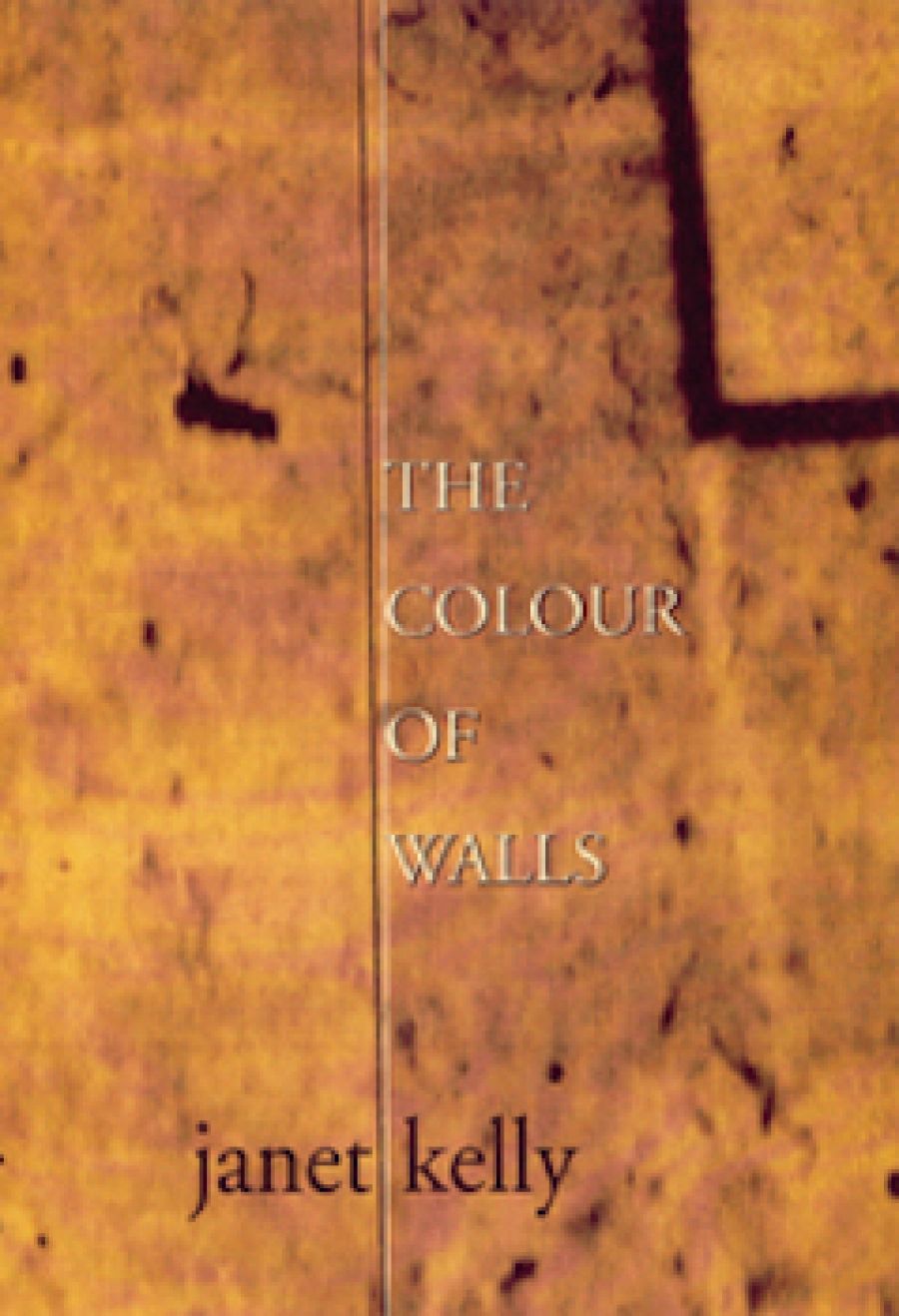
- Free Article: No
- Contents Category: Fiction
- Review Article: Yes
- Online Only: No
- Custom Highlight Text:
In her searing novel, The Colour of Walls, Janet Kelly writes about child abuse and incest with clarity and understanding. The subject matter alone is disturbing, and the sense of cyclical hopelessness is both enduring and arresting. Still, Kelly brings us to a faintly optimistic resolution. This somewhat redeems an otherwise bleakly realistic story.
- Book 1 Title: The Colour of Walls
- Book 1 Biblio: Vulgar Press, $24.95 pb, 306 pp
Uncle Bob is a child abuser. He singles out Erica for his lascivious attentions, but her frightened silence and confusion conceal his paedophilia. When revealing Erica’s plight, Kelly’s writing is restrained and deliberately distant. We soon realise the effectiveness of the technique. Through a first-person narrative, Erica reports on what is happening as if she is a spectator at her own molestation.
Had the novel (set in 1963) stayed locked in the past, it would have been illuminating but limited in its appeal. Instead, Kelly takes Erica through the 1970s and a series of utterly unsatisfactory teenage relationships with abusive partners. She meets Malcolm Duncan and hopes to be cherished. Their marriage is a disaster. He is an alcoholic, and Erica, now with four children, is on a sharp downward spiral. It is in the account of the marriage and the diminution of Erica’s hope that the novel is at its best. Statistics of child abuse can tell us much, but it is when we encounter the personal revelations of the abused and the denials of the abuser that the reality of paedophilia becomes clear. It is not, as Kelly edges us to accept, about under-age sex alone, but the thrill of secrecy, power and dominance.
The novel resonates with the cries of the abused in our society. But apart from the whimpering of children, we sense Erica’s fear during her suicidal husband’s rages. He is a man of base instincts, but not without a level of cunning. His life oscillates around the mag wheels on his beloved blue ute and the rough sexual bravado visited on Erica – and later his daughters – after he has downed several cans of beer. He is a social anachronism and, simultaneously, a reminder that men like him are abroad in contemporary society.
The novel is, on one level, a sharply effective exploration of domestic violence and paedophilic incest. On another plane, The Colour of Walls is about survival. Malcolm endeavours to survive the legal system when his daughters finally reveal what has been happening; Erica tries to survive with her children. It is a compelling and appalling struggle. Malcolm, found guilty of incest, is sent to jail, but we are permitted only the briefest respite and sense of relief. Erica’s two eldest daughters, the abused Jo and Allison, have been seriously damaged by their father’s actions. They go on the streets and become social flotsam and jetsam.
In its cyclical structure (Kelly shows that abuse creates its own legacy of emulative behaviour), the novel has lasting impact. We feel momentarily trapped in repetitive hopelessness and disquieted by Malcolm’s arrogance and Erica’s self-doubt. She begins to wonder if Malcolm has ‘won’ and if she will be punished by her own inability to stop his abuse. But out of an emotional landscape of domestic desolation, ruination and injury, there are moments of tissue-thin redemption. Erica, distressed by the decline of her drug-dependent and abused eldest daughters, struggles to shelter her two youngest children from the family’s past. Seeking some kind of solace, she searches for love, only to be used by men who want her for sex but not for the relationship she hungers for.
Lost in the fug of therapy sessions and searching for her inner child, Erica, sustained by the memory of her two eldest daughters, attains a certain peace and acceptance amid the wreckage. Emerging from this finely written, brutally frank and intense story, we feel that life, for Erica and her four children, is not over and that out of their individual and collective suffering, there is some promise of emotional restoration.


Comments powered by CComment